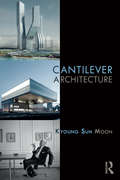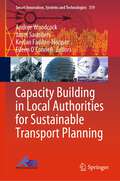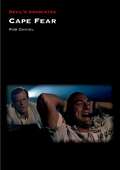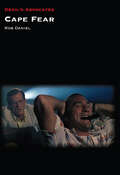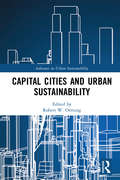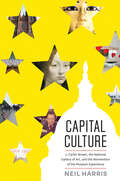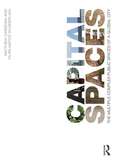- Table View
- List View
Canterbury Pilgrims by Thomas Stothard (tactile)
by Rnib1817; Thomas Stothard, RA (1755-1834); oil on panel in a gilded wooden frame; panel: 27 cm high by 94 cm wide, frame: 54 cm high by 121 cm wide. The whole painting shows the medieval pilgrims of Chaucers Canterbury Tales riding on horseback from London to Canterbury to visit the shrine of St Thomas Becket at Canterbury Cathedral. The procession includes from left to right: the Miller, the Host, the Doctor of Physik, the Merchant, the Sergeant at Law, the Franklin, the Knight, the Reve, the Young Esquire, the Old Ploughman, the Good Parson, the Yeoman, two Nuns, the Priest, a third Nun, the Lady, the Prioress, the Oxford Scholar, the Shipman, the Manciple, Chaucer, the Wife of Bath, the Pardonere, the Crier, the Monk, the Friar, the Goldsmith, the Weaver, the Haberdasher, the Dyer, two Tapestry Merchants and the Cook. This is one of three oil-painted copies by Stothard of an original oil (now in the collection of Tate Britain, London) commissioned from him about 1806 by the engraver and publisher R. H. Cromek, for publication as a print. The three painted copies were commissioned by private collectors, the Canterbury version being painted in 1817 for Irish MP Samuel Boddington, whose fortunes came from West Indies estates. Stothard also painted a number of watercolour versions. Cromek had been so struck with the picturesque description of the pilgrims in Chaucers Canterbury Tales that he conceived the idea of embodying the whole procession in a picture and suggested the design to Mr Stothard. The artist had already made a composition on the theme, which had been engraved and published as an illustration to Chaucers Prologue in Joseph Ritsons The English Anthology, 1793-4. The group at the front of the procession is based on this image. Preparatory sketches (in the collections of Tate Britain) show Stothard working out the best composition for the rest of the procession, which he breaks into five groups. The frieze of horses and figures was modelled on the famous ancient Greek Elgin Marbles. The original oil was displayed by Cromek in 1807 at his house in Newman Street, to drum up subscriptions for the print. It was shown to the Prince of Wales, who graciously permitted Mr Cromek to dedicate the print to him. Cromek also exhibited the painting in a shop window to be seen by visitors to the Royal Academy exhibition at Somerset House, and toured the painting throughout the British Isles, to gain further subscribers (a practice that was common for the issue of prints after paintings in the 19th century). The engraving was eventually published in 1817, and became a familiar household image. The Miller According to Chaucer the miller was a big brawny man with a big mouth, literally and figuratively, [who could] outwrestle any man/ even a ram. He had a red beard, and a wart on his nose from which sprouted bristly hairs. He played the bagpipes to entertain his fellow pilgrims and told a smutty story about a poor student, an elderly carpenter and his rather beautiful young wife.
Cantilever Architecture
by Kyoung Sun MoonCantilever Architecture shows you how to integrate cantilever designs into your building from conception, to help you create support-free structures without the need for columns or walls, whether for balconies, stairs, to occupy the air rights of the lot next door, or to build super tall buildings. The book includes 78 built case studies in 22 countries on 5 continents to illustrate various systems and their load carrying mechanisms at different scales. Includes an appendix on cantilevered furniture and more than 240 black and white images.
Cantilever Architecture
by Kyoung Sun MoonCantilever Architecture shows you how to integrate cantilever designs into your building from conception, to help you create support-free structures without the need for columns or walls, whether for balconies, stairs, to occupy the air rights of the lot next door, or to build super tall buildings. The book includes 78 built case studies in 22 countries on 5 continents to illustrate various systems and their load carrying mechanisms at different scales. Includes an appendix on cantilevered furniture and more than 240 black and white images.
Canvas
by Michael WynneJustine and Alan need to get away from it all. And what better way than camping on a farm in the Welsh countryside? So long as that's camping with all the luxuries, of course: real beds, wood burning stoves and an espresso machine. Sharing the rural idyll are seasoned campers Bridget and Rory, upwardly mobile Amanda and Alistair and a bunch of offspring. But canvas walls and adjacent tents leave little to the imagination in this entertaining exposé of modern family life. Michael Wynne's Canvas premiered at the Minerva Theatre, Chichester, in May 2012.
Capacity: The History, the World, and the Self in Contemporary Art and Criticism (Critical Voices in Art, Theory and Culture)
by Thomas McEvilleyFirst Published in 1997. Routledge is an imprint of Taylor & Francis, an informa company.
Capacity: The History, the World, and the Self in Contemporary Art and Criticism (Critical Voices in Art, Theory and Culture)
by Thomas McEvilleyFirst Published in 1997. Routledge is an imprint of Taylor & Francis, an informa company.
Capacity Building in Local Authorities for Sustainable Transport Planning (Smart Innovation, Systems and Technologies #319)
by Andree Woodcock Janet Saunders Keelan Fadden-Hopper Eileen O’ConnellThis book is conceptualized as being of interest to researchers in the field of sustainable transport, and also those who are working in the field. In the first case it will provide a reference on the state of the art of sustainable transport, and will also include insights into an EU project, how to go about delivering impact, how such projects effect local authorities, etc. Sustainable transport is an extreme growth area; it is highly innovative, with multi-million-pound investments transforming cities. The book will help and encourage resource poor small to medium local authorities catch up and meet their sustainability targets.
Cape (Plays for Young People)
by Inua EllamsIt's a simple idea, really. 1. Wear a uniform; 2. Protect who you love, what you care about; 3. Let nothing get in your way.Someone mugged Bruce's mum and he is not having it. The shock is still visible in her trembling fingers, rippling out across the calm waters of their lives. He grabs his hoodie, his uniform, his cape and goes out to find the culprit. Smithy wants everyone to stay inside, Uhuru wants everyone out. Tanya thinks it's boyish fun and games until, very suddenly, it isn't.Inua Ellams's play questions the boundaries between our right to self-defense and taking the law into our own hands. Told with five roles spanning from young people to adults, it deals with themes that young people face today: the role of boundaries and what happens when someone 'crosses the line'; fear and the use of self-defense; and examining different perspectives on a situation.Originally commissioned by Synergy Theatre Project Cape premiered at London's Unicorn Theatre in 2013 and went on to tour schools, prisons and a young offender institution. This new edition, published within Methuen Drama's Plays For Young People series features notes for teachers and exercises for students for practical use in the classroom.
Cape (Plays for Young People)
by Inua EllamsIt's a simple idea, really. 1. Wear a uniform; 2. Protect who you love, what you care about; 3. Let nothing get in your way.Someone mugged Bruce's mum and he is not having it. The shock is still visible in her trembling fingers, rippling out across the calm waters of their lives. He grabs his hoodie, his uniform, his cape and goes out to find the culprit. Smithy wants everyone to stay inside, Uhuru wants everyone out. Tanya thinks it's boyish fun and games until, very suddenly, it isn't.Inua Ellams's play questions the boundaries between our right to self-defense and taking the law into our own hands. Told with five roles spanning from young people to adults, it deals with themes that young people face today: the role of boundaries and what happens when someone 'crosses the line'; fear and the use of self-defense; and examining different perspectives on a situation.Originally commissioned by Synergy Theatre Project Cape premiered at London's Unicorn Theatre in 2013 and went on to tour schools, prisons and a young offender institution. This new edition, published within Methuen Drama's Plays For Young People series features notes for teachers and exercises for students for practical use in the classroom.
Cape Fear (Devil's Advocates)
by Rob DanielMartin Scorsese’s Cape Fear (1991) opens with a shot of water and climaxes on a raging river. Despite, or perhaps because of, the film’s great commercial success, critical analysis of the film typically does not delve beneath the surface of Scorsese’s first major box office hit. As it reaches its 30th anniversary, Cape Fear is now ripe for a full appraisal. The remake of J. Lee Thompson’s 1962 Cape Fear was originally conceived as a straightforward thriller intended for Steven Spielberg. Author Rob Daniel investigates the fascinating ways Scorsese’s style and preoccupations transform his version into a horror epic. The director’s love of fear cinema, his Catholicism and filmmaking techniques shift Cape Fear into terrifying psychological and psychosexual waters. The analysis also examines the influence of Gothic literature and fairy tales, plus how academic approaches to genre aid an understanding of the film.
Cape Fear (Devil's Advocates)
by Rob DanielMartin Scorsese’s Cape Fear (1991) opens with a shot of water and climaxes on a raging river. Despite, or perhaps because of, the film’s great commercial success, critical analysis of the film typically does not delve beneath the surface of Scorsese’s first major box office hit. As it reaches its 30th anniversary, Cape Fear is now ripe for a full appraisal. The remake of J. Lee Thompson’s 1962 Cape Fear was originally conceived as a straightforward thriller intended for Steven Spielberg. Author Rob Daniel investigates the fascinating ways Scorsese’s style and preoccupations transform his version into a horror epic. The director’s love of fear cinema, his Catholicism and filmmaking techniques shift Cape Fear into terrifying psychological and psychosexual waters. The analysis also examines the influence of Gothic literature and fairy tales, plus how academic approaches to genre aid an understanding of the film.
Capital Cities: Varieties And Patterns Of Development And Relocation
by Vadim RossmanThe issue of capital city relocation is a topic of debate for more than forty countries across the world. In this first book to discuss the issue, Vadim Rossman offers an in-depth analysis of the subject, highlighting the global trends and the key factors that motivate different countries to consider such projects, analyzing the outcomes and drawing lessons from recent capital city transfers worldwide for governments and policy-makers. Capital Cities studies the approaches and the methodologies that inform such decisions and debates. Special attention is given to the study of the universal patterns of relocation and patterns specific to particular continents and mega-regions and particular political regimes. The study emphasizes the role of capital city transfers in the context of nation- and state-building and offers a new framework for thinking about capital cities, identifying six strategies that drive these decisions, representing the economic, political, geographic, cultural and security considerations. Confronting the popular hyper-critical attitudes towards new designed capital cities, Vadim Rossman shows the complex motives that underlie the proposals and the important role that new capitals might play in conflict resolution in the context of ethnic, religious and regional rivalries and federalist transformations of the state, and is seeking to identify the success and failure factors and more efficient implementation strategies. Drawing upon the insights from spatial economics, comparative federalist studies, urban planning and architectural criticism, the book also traces the evolution of the concept of the capital city, showing that the design, iconography and the location of the capital city play a critical role in the success and the viability of the state.
Capital Cities and Urban Sustainability (Advances in Urban Sustainability)
by Robert W. OrttungCapital Cities and Urban Sustainability examines how capital cities use their unique hub resources to develop and disseminate innovative policy solutions to promote sustainability. Cities are taking a leading role in defining a sustainable future at a time when national, state, and regional governments in several countries do not provide sufficient leadership. Capital cities stand out among cities as likely leading drivers in the effort to empower sustainable innovation as they provide a hub for connecting a variety of key constituencies. While acknowledging the successes capital cities have achieved, the international, multi-disciplinary contributors to this work discuss how there is room to do more and improve. The promotion of specific sustainability policies in crucial areas such as clean water provision, high tech innovation, public procurement contracting, and improving flood control in capital cities is examined through various global case studies. The examples range from relatively rich capital cities, such as Copenhagen, where the well-financed hub would be expected to succeed in generating sustainable policies, to poorer cities such as Phnom Penh, where such an optimistic outcome can seem less likely.
Capital Cities and Urban Sustainability (Advances in Urban Sustainability)
by Robert W. OrttungCapital Cities and Urban Sustainability examines how capital cities use their unique hub resources to develop and disseminate innovative policy solutions to promote sustainability. Cities are taking a leading role in defining a sustainable future at a time when national, state, and regional governments in several countries do not provide sufficient leadership. Capital cities stand out among cities as likely leading drivers in the effort to empower sustainable innovation as they provide a hub for connecting a variety of key constituencies. While acknowledging the successes capital cities have achieved, the international, multi-disciplinary contributors to this work discuss how there is room to do more and improve. The promotion of specific sustainability policies in crucial areas such as clean water provision, high tech innovation, public procurement contracting, and improving flood control in capital cities is examined through various global case studies. The examples range from relatively rich capital cities, such as Copenhagen, where the well-financed hub would be expected to succeed in generating sustainable policies, to poorer cities such as Phnom Penh, where such an optimistic outcome can seem less likely.
Capital Cities: Varieties and Patterns of Development and Relocation
by Vadim RossmanThe issue of capital city relocation is a topic of debate for more than forty countries across the world. In this first book to discuss the issue, Vadim Rossman offers an in-depth analysis of the subject, highlighting the global trends and the key factors that motivate different countries to consider such projects, analyzing the outcomes and drawing lessons from recent capital city transfers worldwide for governments and policy-makers. Capital Cities studies the approaches and the methodologies that inform such decisions and debates. Special attention is given to the study of the universal patterns of relocation and patterns specific to particular continents and mega-regions and particular political regimes. The study emphasizes the role of capital city transfers in the context of nation- and state-building and offers a new framework for thinking about capital cities, identifying six strategies that drive these decisions, representing the economic, political, geographic, cultural and security considerations. Confronting the popular hyper-critical attitudes towards new designed capital cities, Vadim Rossman shows the complex motives that underlie the proposals and the important role that new capitals might play in conflict resolution in the context of ethnic, religious and regional rivalries and federalist transformations of the state, and is seeking to identify the success and failure factors and more efficient implementation strategies. Drawing upon the insights from spatial economics, comparative federalist studies, urban planning and architectural criticism, the book also traces the evolution of the concept of the capital city, showing that the design, iconography and the location of the capital city play a critical role in the success and the viability of the state.
Capital Culture: J. Carter Brown, the National Gallery of Art, and the Reinvention of the Museum Experience
by Neil HarrisAmerican art museums flourished in the late twentieth century, and the impresario leading much of this growth was J. Carter Brown, director of the National Gallery of Art in Washington, DC, from 1969 to 1992. Along with S. Dillon Ripley, who served as Smithsonian secretary for much of this time, Brown reinvented the museum experience in ways that had important consequences for the cultural life of Washington and its visitors as well as for American museums in general. In Capital Culture, distinguished historian Neil Harris provides a wide-ranging look at Brown’s achievement and the growth of museum culture during this crucial period. Harris combines his in-depth knowledge of American history and culture with extensive archival research, and he has interviewed dozens of key players to reveal how Brown’s showmanship transformed the National Gallery. At the time of the Cold War, Washington itself was growing into a global destination, with Brown as its devoted booster. Harris describes Brown’s major role in the birth of blockbuster exhibitions, such as the King Tut show of the late 1970s and the National Gallery’s immensely successful Treasure Houses of Britain, which helped inspire similarly popular exhibitions around the country. He recounts Brown’s role in creating the award-winning East Building by architect I. M. Pei and the subsequent renovation of the West building. Harris also explores the politics of exhibition planning, describing Brown's courtship of corporate leaders, politicians, and international dignitaries. In this monumental book Harris brings to life this dynamic era and exposes the creation of Brown's impressive but costly legacy, one that changed the face of American museums forever.
Capital Culture: J. Carter Brown, the National Gallery of Art, and the Reinvention of the Museum Experience
by Neil HarrisAmerican art museums flourished in the late twentieth century, and the impresario leading much of this growth was J. Carter Brown, director of the National Gallery of Art in Washington, DC, from 1969 to 1992. Along with S. Dillon Ripley, who served as Smithsonian secretary for much of this time, Brown reinvented the museum experience in ways that had important consequences for the cultural life of Washington and its visitors as well as for American museums in general. In Capital Culture, distinguished historian Neil Harris provides a wide-ranging look at Brown’s achievement and the growth of museum culture during this crucial period. Harris combines his in-depth knowledge of American history and culture with extensive archival research, and he has interviewed dozens of key players to reveal how Brown’s showmanship transformed the National Gallery. At the time of the Cold War, Washington itself was growing into a global destination, with Brown as its devoted booster. Harris describes Brown’s major role in the birth of blockbuster exhibitions, such as the King Tut show of the late 1970s and the National Gallery’s immensely successful Treasure Houses of Britain, which helped inspire similarly popular exhibitions around the country. He recounts Brown’s role in creating the award-winning East Building by architect I. M. Pei and the subsequent renovation of the West building. Harris also explores the politics of exhibition planning, describing Brown's courtship of corporate leaders, politicians, and international dignitaries. In this monumental book Harris brings to life this dynamic era and exposes the creation of Brown's impressive but costly legacy, one that changed the face of American museums forever.
Capital Culture: J. Carter Brown, the National Gallery of Art, and the Reinvention of the Museum Experience
by Neil HarrisAmerican art museums flourished in the late twentieth century, and the impresario leading much of this growth was J. Carter Brown, director of the National Gallery of Art in Washington, DC, from 1969 to 1992. Along with S. Dillon Ripley, who served as Smithsonian secretary for much of this time, Brown reinvented the museum experience in ways that had important consequences for the cultural life of Washington and its visitors as well as for American museums in general. In Capital Culture, distinguished historian Neil Harris provides a wide-ranging look at Brown’s achievement and the growth of museum culture during this crucial period. Harris combines his in-depth knowledge of American history and culture with extensive archival research, and he has interviewed dozens of key players to reveal how Brown’s showmanship transformed the National Gallery. At the time of the Cold War, Washington itself was growing into a global destination, with Brown as its devoted booster. Harris describes Brown’s major role in the birth of blockbuster exhibitions, such as the King Tut show of the late 1970s and the National Gallery’s immensely successful Treasure Houses of Britain, which helped inspire similarly popular exhibitions around the country. He recounts Brown’s role in creating the award-winning East Building by architect I. M. Pei and the subsequent renovation of the West building. Harris also explores the politics of exhibition planning, describing Brown's courtship of corporate leaders, politicians, and international dignitaries. In this monumental book Harris brings to life this dynamic era and exposes the creation of Brown's impressive but costly legacy, one that changed the face of American museums forever.
Capital Culture: J. Carter Brown, the National Gallery of Art, and the Reinvention of the Museum Experience
by Neil HarrisAmerican art museums flourished in the late twentieth century, and the impresario leading much of this growth was J. Carter Brown, director of the National Gallery of Art in Washington, DC, from 1969 to 1992. Along with S. Dillon Ripley, who served as Smithsonian secretary for much of this time, Brown reinvented the museum experience in ways that had important consequences for the cultural life of Washington and its visitors as well as for American museums in general. In Capital Culture, distinguished historian Neil Harris provides a wide-ranging look at Brown’s achievement and the growth of museum culture during this crucial period. Harris combines his in-depth knowledge of American history and culture with extensive archival research, and he has interviewed dozens of key players to reveal how Brown’s showmanship transformed the National Gallery. At the time of the Cold War, Washington itself was growing into a global destination, with Brown as its devoted booster. Harris describes Brown’s major role in the birth of blockbuster exhibitions, such as the King Tut show of the late 1970s and the National Gallery’s immensely successful Treasure Houses of Britain, which helped inspire similarly popular exhibitions around the country. He recounts Brown’s role in creating the award-winning East Building by architect I. M. Pei and the subsequent renovation of the West building. Harris also explores the politics of exhibition planning, describing Brown's courtship of corporate leaders, politicians, and international dignitaries. In this monumental book Harris brings to life this dynamic era and exposes the creation of Brown's impressive but costly legacy, one that changed the face of American museums forever.
Capital Culture: J. Carter Brown, the National Gallery of Art, and the Reinvention of the Museum Experience
by Neil HarrisAmerican art museums flourished in the late twentieth century, and the impresario leading much of this growth was J. Carter Brown, director of the National Gallery of Art in Washington, DC, from 1969 to 1992. Along with S. Dillon Ripley, who served as Smithsonian secretary for much of this time, Brown reinvented the museum experience in ways that had important consequences for the cultural life of Washington and its visitors as well as for American museums in general. In Capital Culture, distinguished historian Neil Harris provides a wide-ranging look at Brown’s achievement and the growth of museum culture during this crucial period. Harris combines his in-depth knowledge of American history and culture with extensive archival research, and he has interviewed dozens of key players to reveal how Brown’s showmanship transformed the National Gallery. At the time of the Cold War, Washington itself was growing into a global destination, with Brown as its devoted booster. Harris describes Brown’s major role in the birth of blockbuster exhibitions, such as the King Tut show of the late 1970s and the National Gallery’s immensely successful Treasure Houses of Britain, which helped inspire similarly popular exhibitions around the country. He recounts Brown’s role in creating the award-winning East Building by architect I. M. Pei and the subsequent renovation of the West building. Harris also explores the politics of exhibition planning, describing Brown's courtship of corporate leaders, politicians, and international dignitaries. In this monumental book Harris brings to life this dynamic era and exposes the creation of Brown's impressive but costly legacy, one that changed the face of American museums forever.
Capital Culture: J. Carter Brown, the National Gallery of Art, and the Reinvention of the Museum Experience
by Neil HarrisAmerican art museums flourished in the late twentieth century, and the impresario leading much of this growth was J. Carter Brown, director of the National Gallery of Art in Washington, DC, from 1969 to 1992. Along with S. Dillon Ripley, who served as Smithsonian secretary for much of this time, Brown reinvented the museum experience in ways that had important consequences for the cultural life of Washington and its visitors as well as for American museums in general. In Capital Culture, distinguished historian Neil Harris provides a wide-ranging look at Brown’s achievement and the growth of museum culture during this crucial period. Harris combines his in-depth knowledge of American history and culture with extensive archival research, and he has interviewed dozens of key players to reveal how Brown’s showmanship transformed the National Gallery. At the time of the Cold War, Washington itself was growing into a global destination, with Brown as its devoted booster. Harris describes Brown’s major role in the birth of blockbuster exhibitions, such as the King Tut show of the late 1970s and the National Gallery’s immensely successful Treasure Houses of Britain, which helped inspire similarly popular exhibitions around the country. He recounts Brown’s role in creating the award-winning East Building by architect I. M. Pei and the subsequent renovation of the West building. Harris also explores the politics of exhibition planning, describing Brown's courtship of corporate leaders, politicians, and international dignitaries. In this monumental book Harris brings to life this dynamic era and exposes the creation of Brown's impressive but costly legacy, one that changed the face of American museums forever.
Capital Dilemma: Growth and Inequality in Washington, D.C.
by Derek Hyra Sabiyha PrinceCapital Dilemma: Growth and Inequality in Washington, DC uncovers and explains the dynamics that have influenced the contemporary economic advancement of Washington, DC. This volume’s unique interdisciplinary approach using historical, sociological, anthropological, economic, geographic, political, and linguistic theories and approaches, captures the comprehensive factors related to changes taking place in one of the world’s most important cities. Capital Dilemma clarifies how preexisting urban social hierarchies, established mainly along race and class lines but also along national and local interests, are linked with the city’s contemporary inequitable growth. While accounting for historic disparities, this book reveals how more recent federal and city political decisions and circumstances shape contemporary neighborhood gentrification patterns, highlighting the layered complexities of the modern national capital and connecting these considerations to Washington, DC’s past as well as to more recent policy choices. As we enter a period where advanced service sector cities prosper, Washington, DC’s changing landscape illustrates important processes and outcomes critical to other US cities and national capitals throughout the world. The Capital Dilemma for DC, and other major cities, is how to produce sustainable equitable economic growth. This volume expands our understanding of the contradictions, challenges and opportunities associated with contemporary urban development.
Capital Dilemma: Growth and Inequality in Washington, D.C.
by Derek Hyra Sabiyha PrinceCapital Dilemma: Growth and Inequality in Washington, DC uncovers and explains the dynamics that have influenced the contemporary economic advancement of Washington, DC. This volume’s unique interdisciplinary approach using historical, sociological, anthropological, economic, geographic, political, and linguistic theories and approaches, captures the comprehensive factors related to changes taking place in one of the world’s most important cities. Capital Dilemma clarifies how preexisting urban social hierarchies, established mainly along race and class lines but also along national and local interests, are linked with the city’s contemporary inequitable growth. While accounting for historic disparities, this book reveals how more recent federal and city political decisions and circumstances shape contemporary neighborhood gentrification patterns, highlighting the layered complexities of the modern national capital and connecting these considerations to Washington, DC’s past as well as to more recent policy choices. As we enter a period where advanced service sector cities prosper, Washington, DC’s changing landscape illustrates important processes and outcomes critical to other US cities and national capitals throughout the world. The Capital Dilemma for DC, and other major cities, is how to produce sustainable equitable economic growth. This volume expands our understanding of the contradictions, challenges and opportunities associated with contemporary urban development.
Capital Spaces: The Multiple Complex Public Spaces of a Global City
by Matthew Carmona Filipa Matos WunderlichIn recent years it has become common-place to hear claims that public space in cities across the globe has become the exclusive preserve of the wealthy and privileged, at the expense of the needs of wider society. Whether it is the privatization of public space through commerical developments like shopping malls and business parks, the gentrification of existing spaces by campaigns against perceived anti-social behaviour or the increasing domination of public areas by private transport in the form of the car, the urban public space is seen as under threat. But are things really that bad? Has the market really become the sole factor that influences the treatment of public space? Have the financial and personal interests of the few really come to dominate those of the many? To answer these questions Matthew Carmona and Filipa Wunderlich have carried out a detailed investigation of the modern public spaces of London, that most global of cities. They have developed a new typology of public spaces applicable to all cities, a typology that demonstrates that to properly assess contemporary urban places means challenging the over-simplification of current critiques. Global cities are made up of many overlapping public spaces, good and bad; this book shows how to analyze this complexity, and to understand it.
Capital Spaces: The Multiple Complex Public Spaces of a Global City
by Matthew Carmona Filipa Matos WunderlichIn recent years it has become common-place to hear claims that public space in cities across the globe has become the exclusive preserve of the wealthy and privileged, at the expense of the needs of wider society. Whether it is the privatization of public space through commerical developments like shopping malls and business parks, the gentrification of existing spaces by campaigns against perceived anti-social behaviour or the increasing domination of public areas by private transport in the form of the car, the urban public space is seen as under threat. But are things really that bad? Has the market really become the sole factor that influences the treatment of public space? Have the financial and personal interests of the few really come to dominate those of the many? To answer these questions Matthew Carmona and Filipa Wunderlich have carried out a detailed investigation of the modern public spaces of London, that most global of cities. They have developed a new typology of public spaces applicable to all cities, a typology that demonstrates that to properly assess contemporary urban places means challenging the over-simplification of current critiques. Global cities are made up of many overlapping public spaces, good and bad; this book shows how to analyze this complexity, and to understand it.

